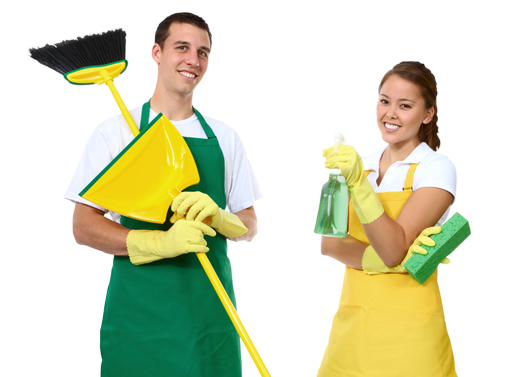Say Goodbye to Stubborn Grease: Enamel Oven Tray Cleaning Made Simple
Posted on 28/09/2025
Say Goodbye to Stubborn Grease: Enamel Oven Tray Cleaning Made Simple
Are you frustrated by the persistent stains and baked-on grease plaguing your enamel oven trays? You're not alone! Oven trays are culinary workhorses, but over time they accumulate stubborn grime that can feel impossible to remove. If you want to restore your enamel oven trays to their original shine, this comprehensive, SEO-optimized guide will show you how--without the frustration or harsh chemicals.

Understanding the Challenge: Why Enamel Oven Trays Get So Greasy
Enamel oven trays are a staple in most kitchens due to their durability, non-stick surface, and ease of use. However, after repeated use, especially for roasting and baking, stubborn grease and burnt-on bits become nearly impossible to budge. The reason? High oven temperatures can cause animal fats, oils, and food residue to bake onto the enamel surface, resulting in a tough, sticky layer that simple washing just can't remove.
Why is this an issue? For starters, accumulated grease not only looks unsightly but can also:
- Cause unpleasant odors during future cooking sessions
- Harbor bacteria and affect food hygiene
- Decrease the effectiveness of your oven tray's non-stick properties
- Potentially shorten the lifespan of your enamelware
Learning how to clean enamel oven trays thoroughly and safely is essential for any home cook.
Essentials to Prepare Before You Begin the Cleaning Process
Before you dive into the cleaning, make sure you have everything you need to fight that stubborn grease on your oven trays. Here's a handy checklist:
- Baking soda (sodium bicarbonate)
- White vinegar
- Dish soap (preferably degreasing)
- Hot water
- Scrubbing pad or sponge (non-abrasive is best to avoid scratching)
- Rubber gloves (protect your hands!)
- Old toothbrush (for corner scrubbing)
- A large sink or bathtub (for soaking larger trays)
The No-Fail Method: How to Clean Enamel Oven Tray Grease
Ready to reclaim your oven tray's original beauty? Here's a step-by-step guide to banishing even the most stubborn grease from enamel trays:
Step 1: Immediate Rinse Is Key
If your enamel oven tray is still warm, begin by rinsing it under hot water immediately after use. This helps to prevent residue from hardening, making the subsequent cleaning process much easier. Use caution and avoid sudden temperature changes to prevent enamel cracking.
Step 2: Soak the Tray
Fill your sink or bathtub with hot water. Add a generous squirt of dish soap and 1/2 cup of baking soda. Stir to dissolve. Submerge your tray and let it soak for at least 1-2 hours (or overnight for extremely stubborn, baked-on grease).
- For oversized trays, try soaking one half at a time or use a plastic storage bin.
- The longer the soak, the easier the grime removal will be.
Step 3: Create a Baking Soda Paste
Mix baking soda with a small amount of water to form a thick paste. This paste is a mild abrasive, perfect for tackling stuck-on grease without damaging the enamel finish.
- Dab the paste onto areas with the most buildup after soaking.
- Let sit for 10-15 minutes for maximum effectiveness.
Step 4: Scrub--But Not Too Hard!
Put on your gloves and use a non-abrasive sponge or scrub pad to work the paste into the grime. Focus on corners and edges, using an old toothbrush for tight spots. Avoid steel wool or metal pads, as these can scratch the enamel surface.
- Rinse often to check your progress.
- Repeat the baking soda paste application for stubborn spots.
Step 5: An Extra Boost--Vinegar Trick
Still struggling with relentless grease? Try this secondary method:
- Sprinkle baking soda directly onto the greasy areas.
- Pour white vinegar over the baking soda--watch it fizz!
- Let the reaction bubble for 5-10 minutes; then scrub again.
Step 6: Final Rinse and Dry
Once all visible grease and residue are removed, give your enamel oven tray a cool rinse with clean water. Dry thoroughly with a soft towel to keep it pristine and prevent water spots.
Why Avoid Harsh Chemicals or Abrasives?
Enamel oven trays feature a glass-like surface fused to a metal core at high temperatures. While tough, the enamel layer can chip or scratch if handled roughly--or if strong chemical cleaners are used.
- Avoid bleach, oven cleaners, and metal scrapers--they can erode the enamel and leave behind toxic residues.
- Stick to mild, kitchen-safe solutions like baking soda and vinegar for safe yet effective cleaning.
Alternative Approaches for Deep-Cleaning Enamel Oven Trays
If regular methods don't quite cut through the grease, try the following safe but more intensive techniques:
1. The Dishwasher (with Caution!)
*Some* enamel trays are labeled dishwasher-safe, but not all. If yours is, use the hottest, most intensive cycle, ideally with a degreasing dishwashing detergent. Inspect for chips or cracks beforehand, as the high temperatures and jets can worsen existing damage.
2. Baking Soda and Hydrogen Peroxide Paste
For the bravest home cleaners: Mixing hydrogen peroxide (3%) with baking soda forms a powerful grease-lifting paste.
- Apply the mixture to the tray, allow to sit for 30 minutes, then scrub and rinse as described above.
- Always wear gloves and ensure adequate ventilation.
3. Oven Tray Soak in Laundry Detergent
Laundry detergent contains surfactants that dissolve food oils. Dissolve 1-2 tbsp of powder or liquid detergent in hot water and let your tray soak for a few hours. Follow up with a thorough rinse to remove all residues.
4. Commercial Enamel Cleaner (Enamel Safe Only!)
If you opt for a store-bought cleaner, verify that it's specifically formulated for enameled surfaces. Avoid anything intended for bare metal or industrial use, which may be too harsh.
Tips for Keeping Enamel Oven Trays Grease-Free Longer
*Now that your oven tray gleams, how do you keep it that way between deep cleans?* Here's how to stop grease from building up in the first place:
- Line the tray with parchment paper or aluminum foil before cooking greasy foods.
- Wipe the tray while still warm with a damp sponge and mild soap after every use.
- Avoid cooking sprays that can create a sticky residue if overheated.
- Do not stack wet trays together--allow each to dry fully to prevent rust around edges.
- Store trays in a dry area to maintain their enamel surface for years to come.
Cleaning Myths Busted: What NOT to Do With Enamel Oven Trays
There's plenty of kitchen folklore about baked-on grease removal, but not all advice is created equal. Let's separate fact from fiction.
-
MYTH: "A metal scouring pad is the fastest way."
TRUTH: Metal pads scratch and damage the enamel, making future stains and rust more likely. -
MYTH: "Oven cleaner sprays are fine on enamel."
TRUTH: Many industrial oven cleaners are far too strong and can deteriorate the enamel or even leave behind harmful chemicals. -
MYTH: "It's fine to let grease build up--just cook hotter next time."
TRUTH: Baked-on grease can impart burnt flavors and lower your food quality, as well as become harder to remove. -
MYTH: "You can chip off burnt food with a knife."
TRUTH: Using sharp utensils on enamel surfaces greatly increases the risk of chipping.

Frequently Asked Questions: Enamel Oven Tray Cleaning Made Simple
-
Q: Can I put my enamel oven tray in the dishwasher?
A: Some trays are labeled as dishwasher-safe, but repeated dishwasher use (especially at high heat) can weaken the enamel coating over time. Check the manufacturer's instructions first, and hand wash whenever possible. -
Q: What if my tray has chipped enamel?
A: Avoid using chipped enamel trays for food preparation, as exposed metal can rust and compromise hygiene. Consider replacing the tray or using it as a drip tray only. -
Q: Will baking soda scratch my enamel tray?
A: No, baking soda is mildly abrasive but gentle enough for enamel. Avoid scrubbing too hard or using with harsh pads. -
Q: How often should I deep-clean my enamel oven tray?
A: For best results, deep clean once a month--more often if you use your tray for roasting or high-fat foods. -
Q: Can I use lemon juice instead of vinegar?
A: Yes, lemon juice is also acidic and safe for enamel, offering a fresh scent as it helps break down grease.
Wrap-Up: Sparkling Clean Enamel Trays Made Simple
There's no need to dread cleaning your enamel oven trays. Armed with the right ingredients and techniques, tackling stubborn grease becomes quick, safe, and hassle-free. With regular maintenance--and a little baking soda magic--you'll ensure your enamel oven trays stay pristine and provide delicious, hygienic meals for years to come. Say goodbye to stubborn grease, and hello to oven tray cleaning made simple!
- Remember: Avoid harsh abrasives or chemicals
- Use natural cleaners like baking soda and vinegar
- Deep-clean regularly for best results
- Protect your enamelware for long-lasting kitchen performance
Ready to put your kitchen to the test? Try these enamel oven tray cleaning tricks today and experience the satisfaction of a sparkling oven tray--no more stubborn grease, guaranteed!
```



